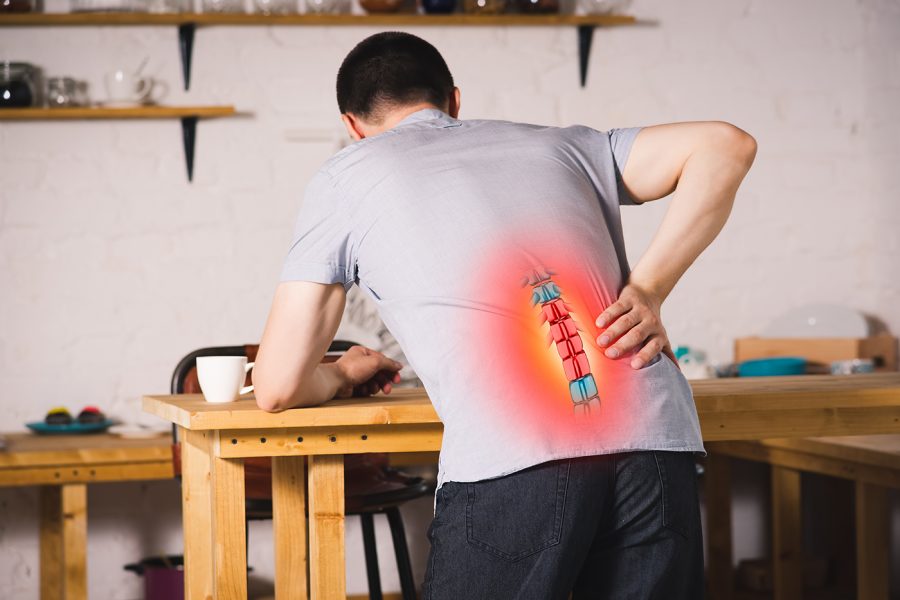How to Treat Painful Inflamed Discs and Inflammation
When asked about any symptoms or pain, our patients often bring up the term, “inflamed disc.” Usually they mean that their lower back and/or neck feels painful and hot. While they are not completely wrong, there is actually more to the story than meets the eye. In order to understand what an inflamed disc is, we must understand the concept of inflammation.

What is inflammation?
Inflammation is the very first “healing” mechanism that our body initiates when something is out of whack. We all know that painful, hot feeling that occurs when our skin gets cut; the wound swells up and feels sore as the cut heals. This is because, in order to repair itself, the nervous system sends white blood cells to the afflicted area to fight any foreign invaders that may try to enter and harm the body.
Another example is arthritis. It can be described as inflammation of the bone. People who use their fingers constantly (eg. chefs, construction workers, etc.) may experience enlarged knuckles and/or swollen joints because of excessive and repetitive use over time. When the body experiences excessive impact, the brain sends white blood cells to the area in order to protect the body and its functions. Inflammation is the first and foremost defensive mechanism that our body has, but it can have adverse effects if it does not retreat after the job is done.
What does an inflamed disc feel like?
Now that we’ve defined inflammation, what about an inflamed disc? The disc is a fibrous cartilage that protects bone against bone. Without it, our bones would grind down against each other, causing pain and rendering the body immobile! Discs are designed to fit the shape of the surrounding bones, but if there is any misalignment or incorrect movement, the disc will be pressed down to one side, damaging the disc fibers and resulting in what we call, “bulging discs.” This is likely when the body sends the inflammation signal, which causes edema and swelling in the areas around the bulging disc. This then negatively impacts the spinal nerves behind the disc, causing more pain and other various symptoms. If you have an inflamed disc, you will likely feel a burning sensation in the area and sharp pain with movement as well as muscle tension.
You may be interested in learning about disc injury here.

How to treat and prevent inflammation.
⒈ The first step is to recognize why the disc is compromised: were you in a past car accident? Or maybe it’s a result of an old sports injury from high school football? Or from that one time you fell down in front of your garage? Or, it could simply be an accumulation of micro-traumas from sitting with your legs crossed or sitting in front of the computer for extended periods of time. These various causes will impact the discs over time and alarm the body’s defense system.
⒉ If you realize that there is a potential cause for any inflammation or an inflamed disc, then the next step is to seek confirmation from an expert. We recommend getting x-rays and an x-ray analysis done (preferably with a Gonstead chiropractor as they specialize in x-ray analysis), so you can verify that your suspicions are true. Rather than playing the guessing game, it’s better to get an exact diagnosis and treatment plan.
⒊Once you’ve initiated regular chiropractic treatment and are receiving proper chiropractic adjustments, it’s time for prevention! Treatment is actually the easy part, the more difficult yet important step is to prevent it from happening again because once a disc is inflamed, that area becomes weakened and vulnerable, thus increasing the risk of it happening again. So how do you prevent inflammation? It’s all about small lifestyle improvements! Here are some ideas to get you started on the road to lasting wellness:
• Wellness treatments such as massage therapy and acupuncture
• Regular exercise such as yoga, pilates, or daily walks
• Practice upright posture and work on your sleeping position
• Hydrate daily
• Reduce stress levels with meditation and fun hobbies
• Decrease inflammatory foods in your diets
• Add supplements to your routine (check with your chiropractor first)
• Use ice on the vulnerable area regularly
• Use an ergonomic mouse/keyboard/standing desk with anti-fatigue mat when you work from home (and in the office)
• …and MORE! Feel free to check back for more ideas and how-to’s from your friendly Gonstead chiropractor.
This should get you started on the path to recovery and set you up for success in preventing future inflammation. If you are seeking chiropractic treatment in Greater Seattle, contact us at Alight Chiropractic to learn more about how our Kirkland chiropractor can help you!





